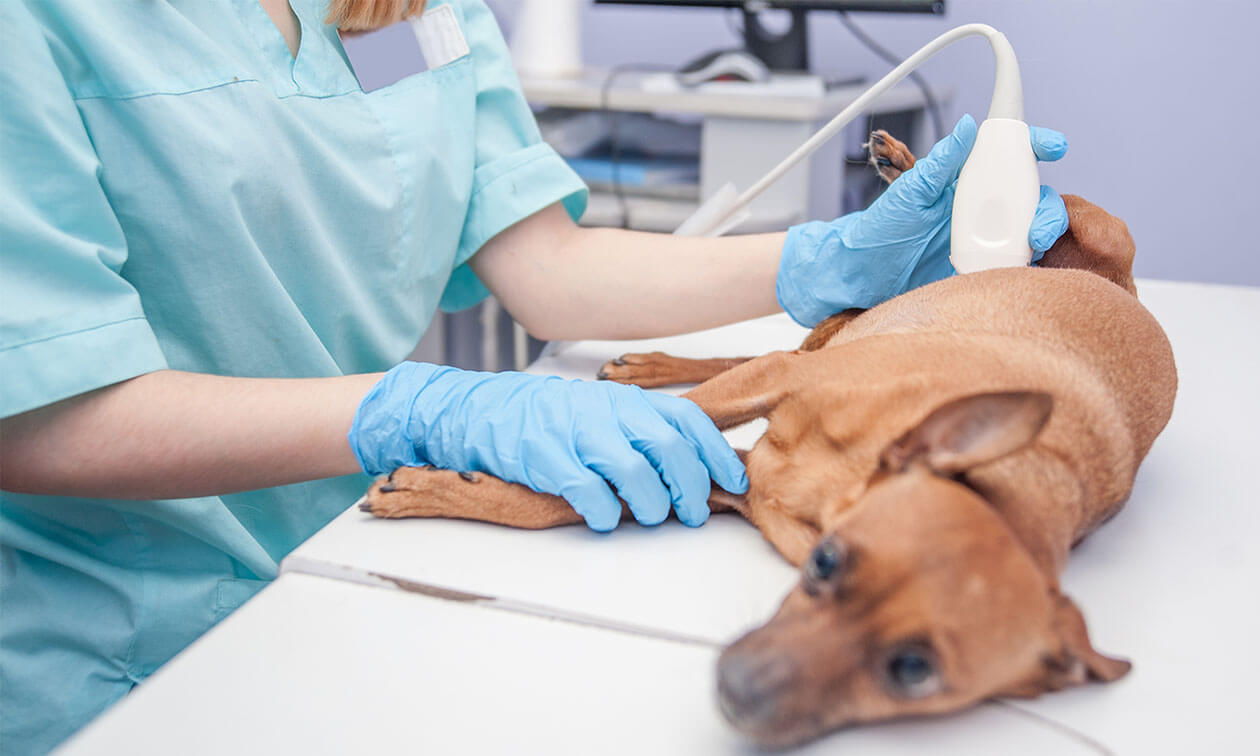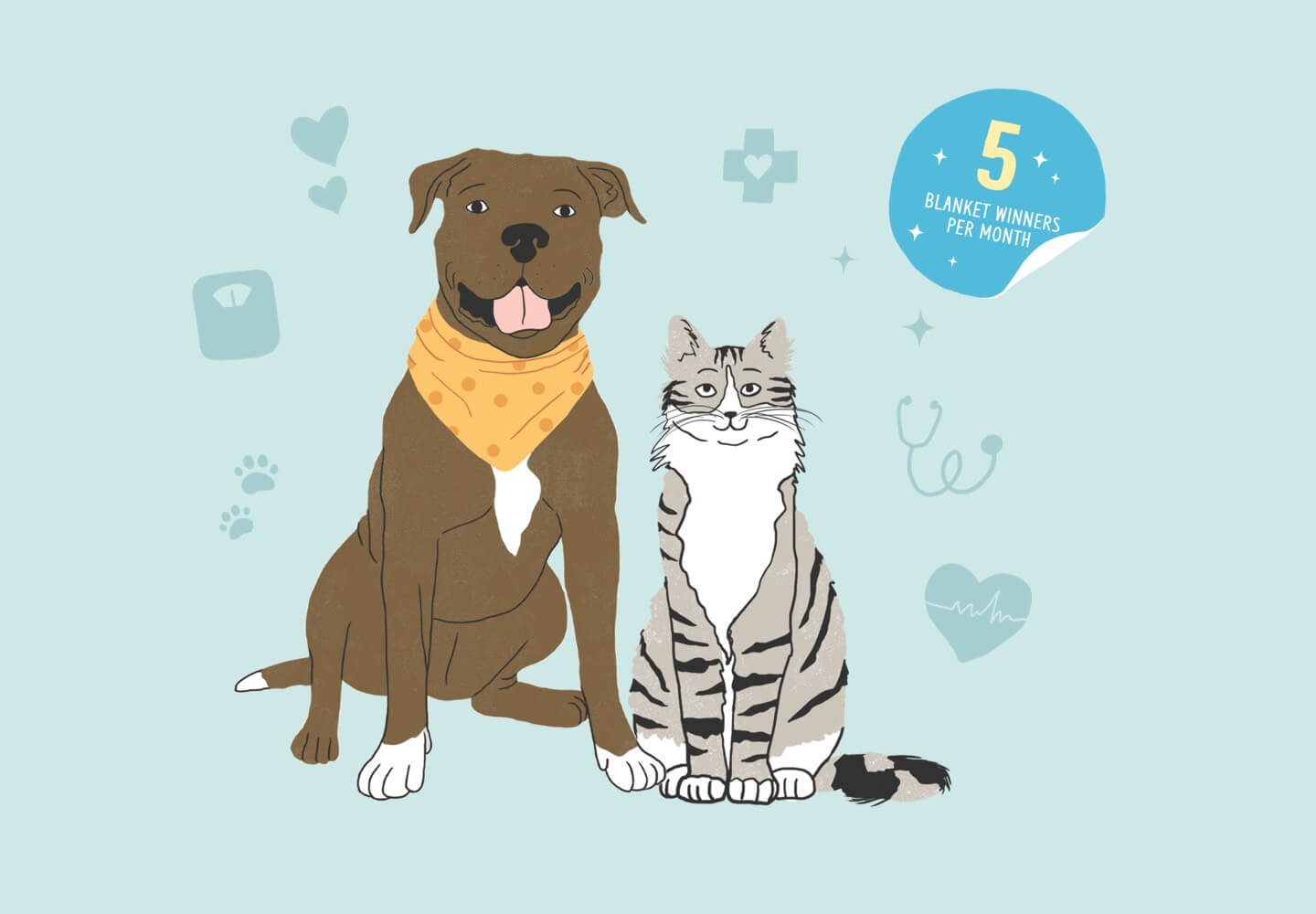Dogs will sometimes try and eat all sorts of things, but when your dog eats things they’re not supposed to, they’re at risk of an intestinal blockage. This serious condition can result in devastating health issues for your dog if not addressed quickly. Understanding what an intestinal blockage is and the potential causes and signs can help you protect your dog from this emergency.
What Is Intestinal Blockage in Dogs?
An intestinal blockage, whether partial or complete, prevents the passage of liquids or solids through your dog’s gastrointestinal tract. In the area of the blockage, blood flow is restricted, and the intestines begin to deteriorate. Toxic contents are created and absorbed as the intestines become more damaged. If left untreated, the intestines can rupture.
What Are the Signs of Intestinal Blockage in Dogs?
The signs of intestinal blockage can mimic those of simple gastrointestinal upset. If your dog has an upset belly, it’s important to closely monitor any changes in their symptoms that could indicate a blockage. Contact your veterinarian immediately if you notice any of the following signs or if you know your dog ingested a foreign object.
- Vomiting often and continually
- Loss of appetite
- Nausea with signs like drooling, licking the lips, dry heaving, or chewing when they aren’t eating
- Weakness
- Restlessness
- Whining
- Stomach pain
- Change in behavior, typically getting aggressive when you get near their abdomen
- Abdominal bloating
How Are Intestinal Blockages in Dogs Treated?
Intestinal blockages require immediate veterinary care. When not addressed quickly or left untreated altogether, your dog will experience considerable discomfort. They can become significantly dehydrated, their intestines can rupture, and death is possible. If your dog is showing any of these signs and there is any chance it ate something, call your veterinarian immediately.
Your dog may be treated medically or surgically to correct the obstruction, based on different factors, including:
- Where in the intestine the blockage occurs
- The length of time the object has been stuck
- The size of the object
The shape of the object
- The structure of the object
Since some smaller objects can pass on their own with time, these may be medically treated and monitored for 48 hours. Surgical removal is needed if the object does not pass or your dog develops more serious signs.
Surgical intervention is necessary for larger objects or those that pose an immediate danger. This is a surgical procedure and requires your dog to be anesthetized.
If the blockage is due to a foreign object, the surgeon will make an incision near the blockage and remove the object(s) carefully. Depending on the amount of foreign material and the damage to the intestines, the length of the surgery will vary. If there is damage to the intestine, the veterinarian may need to remove a part of the intestine.
Intestinal blockage can also result from twisting or intussusception, where a portion of the intestine folds into the section next to it. Both are corrected by manually manipulating the intestine, or the tissue is surgically removed, and the remaining ends of the intestines are reconnected.
Recovery from Intestinal Blockage
The first 72 hours after surgery are the most critical. During this time, your dog will be hospitalized and monitored for:
- Sepsis (bacteria in blood)
- Wound opening
- Low blood protein count
If, your dog is doing well, they will be discharged after a few days. It’s critical to follow your veterinarian’s discharge instructions closely. Some things you’ll need to do at home include:
- Giving all medications as directed
- Keeping the Elizabethan collar on at all times
- Restricting activity — no running, jumping, or playing
- Monitoring the incision for redness, swelling, or discharge several times daily
- Giving short leash walks only for potty breaks
- Feeding small, frequent meals of a bland diet for the first several days and then gradually transitioning back to their regular diet
- Ensuring they are drinking enough water to prevent dehydration
Your veterinarian will let you know when you can stop the medication, return to normal feeding and activity, and remove the Elizabethan collar.
What Causes Intestinal Blockage in Dogs?
While all dogs can have an intestinal blockage, younger dogs tend to be at a higher risk since they can be more curious and will chew on anything. That’s because the most common cause is ingesting foreign bodies. There are many surprising things dogs will swallow, including:
- Underwear
- Socks
- Dish towels
- Toys
- Plastic
- String
- Yarn
- Rope
- Wire
- Dental floss
- Bones
- Rocks
- Large fruit pits
- Dirt or sand
- Pinecones
Partial intestinal obstructions are generally caused by linear (string-type) or small foreign objects. Complete blockages are generally caused by large, round objects. An intestinal blockage can be caused by more than one foreign body. If your dog is regularly swallowing hair ties, for example, they can form a blockage over time.
Intestinal obstructions can also be the result of:
- Masses or tumors
- Gastrointestinal inflammation due to infection
Intestinal parasites
- Twisting of the intestines
- Intussusception, where one portion of the intestines slides into another
How Can You Prevent Intestinal Blockage in Your Dog?
Prevention of intestinal blockages by foreign objects involves minimizing or eliminating your dog’s opportunities to ingest them. Some ways to do this include:
- Keeping things out of reach
- Being aware of objects in the house and noting if they go missing
- Closely supervising your dog inside and outdoors
- Securing all trash cans
- Training your dog verbal commands such as “leave” or “drop it”
Ensuring your dog is getting plenty of mental and physical enrichment, so they aren’t bored and looking for things to get into.
ZPC-02542



